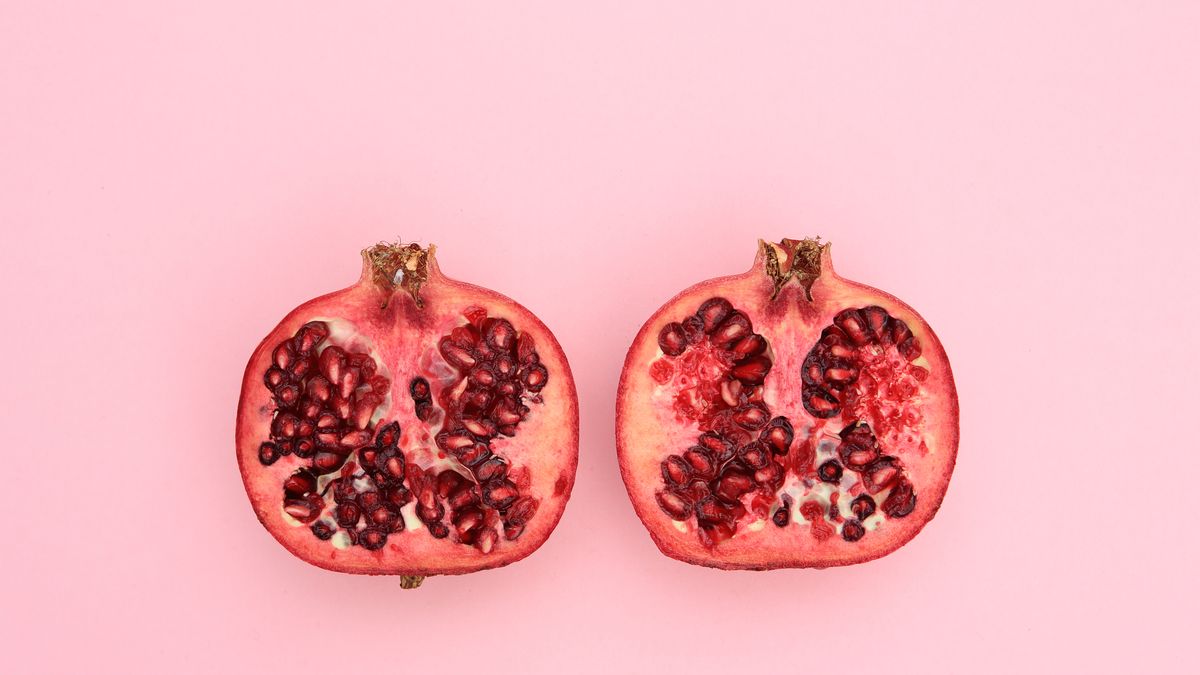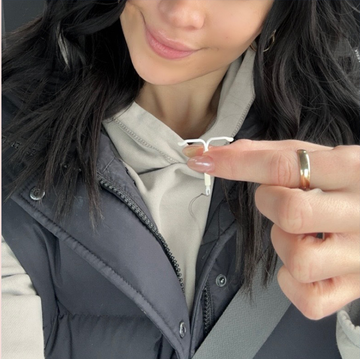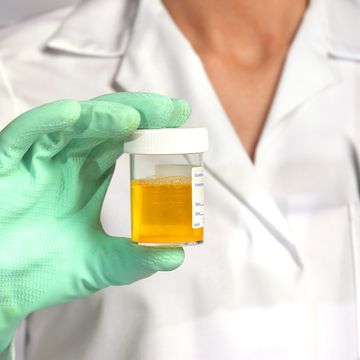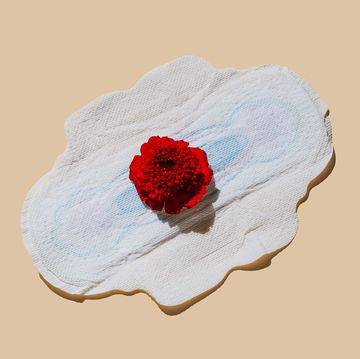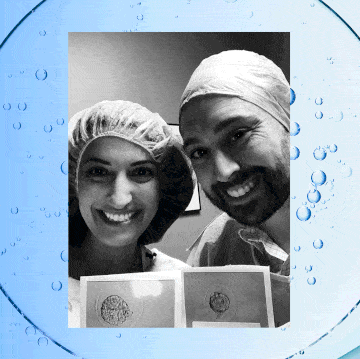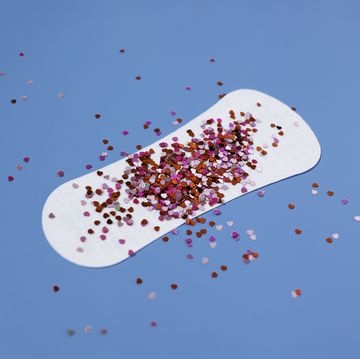You may or may not give your vaginal landscape much thought on the daily. But when a mysterious bump on your vagina pops up, the alarm bells likely sound.
Don’t panic because indentations and a bumpy surface in your vagina walls are usually normal parts of the vaginal structure, or rugae, says Taraneh Shirazian, MD, a New York City-based ob-gyn and ambassador for Monistat. “This is part of your normal anatomy and just may not be something you noted before,” she explains. The vagina has a natural texture rather than being a smooth surface, she adds.
That said, you should not ignore every bump or lump. If you have symptoms that you are concerned about (persistent pain, extreme vaginal itching, and/or if the bump is rapidly growing), make sure to bring it up with your ob-gyn, says Jodie Horton, MD, an ob-gyn in Washington, DC and the chief wellness advisor for Love Wellness. This is especially true if you have a darker skin tone, she notes. "Vulvar skin conditions may be more difficult to notice in women with darker skin, especially if the skin in the genital area is protected by pubic hair.”
Curious what you’re dealing with? Keep scrolling for the 12 most common causes of vaginal and vulvar bumps, plus how to identify the culprit—and, of course, some possible treatment options.
Meet the experts: Sameena Rahman, MD, is an ob-gyn at Center For Gynecology and Cosmetics in Chicago. Taraneh Shirazian, MD, is a New York City-based ob-gyn with NYU Langone and the director of the Center for Fibroid Care. She is also an ambassador for Monistat. Jodie Horton, MD, is an ob-gyn practicing in Washington, DC, and assistant clinical professor at Georgetown University. She is also the chief wellness advisor for Love Wellness. Eve Espey, MD, is a professor and the chair of the department of obstetrics & gynecology and family planning fellowship director at the University of New Mexico. Melanie Bone, MD, is an ob-gyn in West Palm Beach, Florida and member of Daye’s medical board. Carolyn DeLucia, MD, is of VSPOT Medi SPA in New York City. Allison Hill, MD, is an ob-gyn at Good Samaritan Hospital in Los Angeles and co-author of The Mommy Docs' Ultimate Guide to Pregnancy and Birth.
Vaginal Bump Causes
1. You have a breakout.
“Same as anywhere else on the body, we may develop acne in the vaginal area as well,” says Carolyn DeLucia, MD, of VSPOT Medi SPA in New York City. They look just like any other acne blemish would: red, irritated, and sometimes filled with pus. (When they are pus-filled, they may appear as white bumps near the vagina.)
Uncomfortable as the zits may be, fight the urge to squeeze them. Dr. DeLucia recommends letting your skin clear up on its own: “Vaginal acne usually resolves itself, as it does on the face,” she says.
2. Your hair-removal routine is irritating your skin.
Removing hair down there can be a real pain. Aside from making the delicate skin along your bikini line red and itchy, it can also lead to ingrown hairs and folliculitis—a fancy term for an infected hair follicle. Basically, it's super easy for hair removal to lead to bumps in your vagina region, more specifically the vulva.
“Due to efforts to treat the vaginal area with depilatories, shaving, and waxing, the hairs that grow back may get trapped [under the skin] and infected, causing bumps and pain,” says Dr. DeLucia.
Toning down the hair removal for a week or two should help prevent a hairy situation from getting worse, but grooming-inflicted bumps on the vulva usually go away on their own anyway, says Eve Espey, MD, a professor and the chair of the obstetrics and gynecology department at the University of New Mexico School of Medicine.
3. You have an allergic reaction or infection.
Irritation from either a vaginal infection or from an allergic response may cause minor bumps in the vaginal canal, says Dr. Shirazian. You can also develop vulvar inflammatory infections such as lichen sclerosus, lichen simplex chronicus, or lichen planus which cause the skin on your vulva to thicken and change texture due to an allergen or irritant, adds Sameena Rahman, MD, an ob-gyn at Center For Gynecology and Cosmetics.
“Be careful using products on or in the vagina that can alter [its] pH and cause irritation,” she explains. The solution in this case may be as simple as changing your soap. If you have an infection caused by yeast, for example, Dr. Shirazian recommends trying over-the-counter products like miconazole nitrate creams to decrease inflammation and irritation and to treat the infection.
4. You have sebaceous cysts.
Between sitting at a desk from nine to five, working up a sweat at the gym, and wearing constrictive underwear practically every minute of the day, your vagina definitely doesn’t get nearly as much fresh air as it needs.
A constantly stuffy environment between your legs and incessant rubbing against clothing can lead to the growth of sebaceous cysts (fluid-filled, possibly white bumps on your vagina area that can appear like acne).
“They’re often found in the groin area,” says Dr. Espey. “They can become infected, but the infection usually stays right in that area.”
Warm soaks and a visit to the doctor might be needed to treat sebaceous cysts, says Dr. DeLucia, but they’re nothing to lose sleep over.
5. You have genital warts.
Vaginal warts are a type of sexually transmitted infection (STI), and they’re often caused by specific strains of the human papillomavirus (HPV). They’re small in size, they can be rough or smooth on the surface, and they’re typically skin color or slightly darker.
“Warts do not cause health problems,” says Dr. Espey, “though most women seek treatment because of the stigma and cosmetic concerns around having genital warts, which are contagious through sexual contact.”
Although the warts themselves aren’t dangerous, you should still check in with your physician to find out if they were caused by HPV, which could put you at risk for cervical cancer and other issues.
6. You have a Bartholin's cyst.
If the bump or lump is near the opening to your vagina, it may be a Bartholin's cyst, says Allison Hill, MD, an ob-gyn at Good Samaritan Hospital in Los Angeles and co-author of The Mommy Docs' Ultimate Guide to Pregnancy and Birth.
You have glands on each side of your vaginal opening that are responsible for helping you stay lubricated, but occasionally these can get blocked or backed up with fluid. If the cyst is small and painless, your doc will probably tell you to wait it out, and it will likely go away on its own. But if it becomes large and/or painful, you need to see your doctor right away. They can drain the cyst and prescribe antibiotics if necessary.
7. You have ingrown hairs.
Pubic hair is characterized by its curly shape, but that tight coil can have a major downside: Pubic hairs are way more likely than other hairs to burrow back into your skin, causing ingrown hairs. "The most common reason I see for painful bumps in the vaginal area are ingrown hairs," Dr. Hill notes.
These can become infected, but that's pretty rare—more often than not they're just itchy and annoying, she adds. You can use tweezers and a mirror to try and remove the offending hair yourself, or you can leave it alone and it should eventually heal on its own.
If the bumps aren't going away or show signs of infection (redness, swelling, pain, or pus), check in with your doc, she says.
8. You have an infected sweat gland.
Sweat glands are everywhere, including in your groin region, as any girl who's ever worn light-colored leggings during a workout can attest. And those sweat glands can get infected, causing swollen, painful bumps on your vagina area, Dr. Hill says.
Women who work out in tight leggings (which is pretty much everyone, right?) are particularly at risk for this affliction—especially if you don't shower right away, she says. Staying in your damp workout pants, undies, or swimsuit, particularly those that aren't made from a wicking fabric, traps the sweat against your skin which can cause your sweat glands to become blocked or infected.
Proper hygiene, including thoroughly rinsing your vaginal area with clean water and a mild soap if you want, and changing into dry clothes as soon as possible, will prevent most of the bumps on your vagina, she says. Otherwise, they'll probably go away on their own; but if they show signs of infection, call your doctor.
9. You have vaginal inclusion cysts.
Cysts can happen anywhere, explains Dr. Horton, but a vaginal inclusion cyst is the most common type of cyst you'll find down there. They're often caused by trauma, childbirth, or vaginal surgery.
While they typically don't cause any pain and aren't dangerous, they can definitely be annoying. If it turns out you have vaginal inclusion cysts, your gyno will monitor them.
10. You have Skene’s duct cysts.
Skene’s glands are found on each side of the urethra (the urinary opening where you pee), explains Dr. Horton. A Skene’s duct cyst will form if the gland becomes obstructed due to an infection. These cysts are usually less than a centimeter in size and don’t cause any other symptoms. Cysts larger than a centimeter, however, can cause pain with urination and sex.
If the cyst becomes infected and filled with pus, and forms an abscess, the gland will be tender, swollen, and red. An abscess can be treated with antibiotics or surgically removed.
11. You have genital herpes.
Herpes is a common sexually transmitted infection caused by herpes simplex virus (HSV) 1 and 2, says Dr. Horton. After initial exposure, the virus will become dormant and can reactivate at any time. Symptoms include pain, itching, small red bumps, tiny white blisters, or ulcers. During an initial outbreak, you may have flu-like signs and symptoms, such as swollen lymph nodes in your groin, headaches, muscle aches, and fever, as well as itching and burning.
“There is no cure for herpes, but symptoms can be treated quickly with antiviral medication to decrease the duration of an outbreak,” says Dr. Horton. “Condoms are the best way to reduce your risk of exposure and transmission of herpes.”
12. You have a vaginal boil.
It's easy to mistake a pimple for a vaginal boil, but a boil is typically more swollen and painful, says Melanie Bone, MD, an ob-gyn and member of Daye’s medical board. That said, just like a pimple, a boil could have a tip of pus.
Also known as a vaginal abscess, a vaginal boil is a localized collection of pus and tissue that forms within the walls of the vaginal canal, says Dr. Bone. “They are rare but seem to be caused by bacteria entering microscopic openings in the vaginal wall,” she explains, adding that the condition is most commonly caused by a bacterial infection with Staphylococcus aureus.
“Infrequent underwear changes, frequent shaving, and sometimes unprotected sex can increase your risk of developing a vaginal boil,” she says.
The boils typically cause pain and discomfort, particularly during sex and urination, but they usually go away on their own, says Dr. Bone. “Do not squeeze or pop the boil as that can increase and spread the infection, and if you are experiencing pain and discomfort, try applying a warm sanitary compress or take over-the-counter painkillers.”
If the boil persists over two weeks, or gets worse over time, it’s time to see a doctor since a prescription treatment may be needed, says Dr. Bone. “Remember to wear loose clothing so as to not irritate the boil further, and do not use any harsh vulval or vaginal gels or douches,” she explains. It’s best to wash with a mild baby soap or a specialized, pH-tested vulva cleanser.
What’s the difference between the vulva and the vagina?
“The word vagina is typically used when referring to the female reproductive system, rather than just the vagina or the vaginal canal,” says Dr. Bone.
The vulva refers to the external genitalia, including the labia majora and labia minora, which are the inner and outer lips of the vulva, Dr. Bone explains. The vulva also includes the clitoris, the clitoral hood, the vaginal opening, and the urethral opening, she adds.
When it comes to bumps on the vulva, they’re pretty common. These are most often caused by ingrown hairs, especially if you shave or wax, explains Dr. Bone, although there are many other potential causes.
The vagina is the internal canal between the vaginal opening and the cervix and uterus, says Dr. Bone. This is where menstrual blood leaves your body, and where things like tampons enter. “Bumps inside the vagina are significantly less common and might be associated with scarring from childbirth or a vaginal cyst,” she says.
How are vaginal bumps typically treated?
A lot of vaginal bumps go away on their own, but when it comes to at-home treatment, never-ever pop or squeeze! This can increase the spread of infection and further irritate the affected area, says Dr. Bone. If you are experiencing pain and discomfort, try applying a warm sanitary compress and avoiding tight clothing that rubs against your vulva, she explains. You can also consider over-the-counter painkillers, she adds.
Avoid harsh vulval or vaginal gels or douches and instead gently wash the bump with mild baby soap or a specialized, pH-tested vulva soap, explains Dr. Bone.
Your physician may also recommend STI testing, prescription medication, antibiotic therapy, or even surgery, adds Dr. Bone.
When To Talk To Your Doctor
If your vulvar or vaginal bump is causing persistent pain, itching, and/or burning, then it’s time to see a doctor, says Dr. Bone. It’s also best to visit a physician if the bump is rapidly growing or changing in appearance and/or color, or if the bumps are increasing in number, she adds. If you suspect the bump may be associated with a sexually transmitted infection (STI), schedule an appointment to get tested ASAP.
In extreme cases where the bump is causing you severe pain and discomfort, you should seek emergency care immediately, says Dr. Bone.
Andi Breitowich is a Chicago-based writer and graduate student at Northwestern Medill. She’s a mass consumer of social media and cares about women’s rights, holistic wellness, and non-stigmatizing reproductive care. As a former collegiate pole vaulter, she has a love for all things fitness and is currently obsessed with Peloton Tread workouts and hot yoga.
Sameena Rahman, MD, is an ob-gyn at Center For Gynecology and Cosmetics in Chicago.
